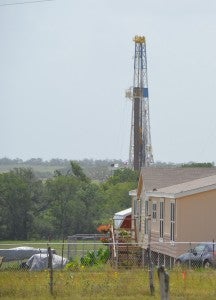
Source: NASA
Just as we thought science was finally taking root, here comes another article claiming that the rise in global temperatures has nearly stopped over the last 15 years. We heard it most recently from the Wall Street Journal.
Never mind that it’s been 30 years since a month was below the 20th century global average surface temperature. Or that climate change is evidenced by clearly visible sea ice and glacial melt. Skeptics support their argument by pointing out, time and time again, how little the Earth has warmed since 1998.
Indeed, the “nearly-stopped warming” may at face value appear to be supported by convincing scientific data. But don’t be fooled: 1998 was an exceptionally warm year thanks to a very intense El Niño, a naturally-occurring phenomenon involving unusually warm water in the Eastern Pacific Ocean.
The change in temperature from 1998 to today, therefore, is not at all a good representation of the long-term trend. It makes the nearly-stopped warming argument no more scientific than a snowball would be in Washington in February.
Selective statistics don’t make a trend
Think of it as if you were to use the holiday season as a benchmark for measuring body weight.
If I looked at the weight change I had between Thanksgiving and December 31, a time of year when I usually enjoy lots of good food, the picture would look very different than if my weight monitoring began the week before Thanksgiving. That’s because a Thanksgiving start date would be a higher-than-normal weight day, an anomaly.
And, yet, this is exactly what proponents of the nearly-stopped-warming theory are doing.
While it’s true that the rate of temperature change has decreased since 2001, they cherry-pick a recent 15-year period, 1998 to 2012, starting with an initial year that is already way above average to prove their point. Of course, these quasi-scientists aren’t transparent about their strategy, so a non-expert would have to dig into the data to realize they are being tricked.
El Niño always a wild card
El Niño, meanwhile, was just doing what niños tend to do: It threw us for a loop.
The one occurring for 10 consecutive months 1997-98 was the most intense ever recorded, making 1998 the hottest year up until that point. (Three years have since broken that record: 2005, 2010 and 2014.)
Scientists have a number of technical and statistical methods for delineating natural from human influences on the temperature record, and apply these tools depending on the research questions they’re trying to answer.
But the overall global record is not touched, so if you don’t know which years were affected by natural events such volcanic eruptions, it can look noisy and confusing.
This is why we need to look at long-term trends to get the real answers.
This post originally appeared on our EDF Voices blog.













